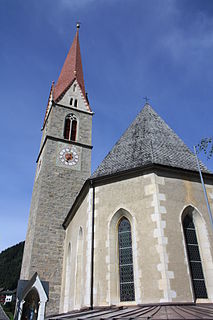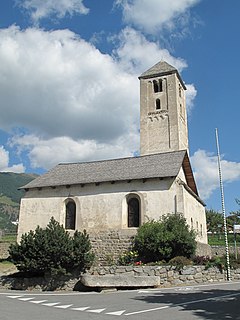History
Most South Tyrolean castle scholars believe the castle hill was already settled and fortified in the Rhaetian period. The most recent archaeological finds confirm this.
According to one theory, Hocheppan Castle was built around 1125 by Count Ulrich II of Eppan as a stronghold (Trutzburg). Other researchers believe a later construction date is more probable.
The former seat of the counts of Eppan near the village of St. Pauls had become unsafe due to conflicts with the counts of Tyrol. Where it was, exactly, is not known, but in any case the Altenburg ("Old Castle") in Eppan is not the predecessor of Hocheppan.
In 1158, after the Eppans had ambushed a Papal delegation, the castle was destroyed in a punitive expedition under Henry the Lion, but was then rebuilt. In 1315, it was transferred to the princes of Tyrol, who subsequently enfeoffed it to various families. In 1834, Emperor Francis I enfeoffed the castle to Martin Teimer von Wildau. Since 1911 the counts of Enzenberg have owned Hocheppan.
Meanwhile, the structure of the castle has been consolidated and, in places, restored. The site is home to a snack bar today.

South Tyrol is an autonomous province in northern Italy, one of the two that make up the autonomous region of Trentino-Alto Adige/Südtirol. The province is the northernmost of Italy, the second largest, with an area of 7,400 square kilometres (2,857 sq mi) and has a total population of 531,178 inhabitants as of 2019. Its capital and largest city is Bolzano.

Bolzano is the capital city of the province of South Tyrol in northern Italy. With a population of 108,245, Bolzano is also by far the largest city in South Tyrol and the third largest in historical Tyrol. The greater metro area has about 250,000 inhabitants and is one of the urban centers within the Alps.

Brixen is a town in South Tyrol in northern Italy, located about 40 kilometres (25 mi) north of Bolzano.

Sterzing is a comune in South Tyrol in northern Italy. It is the main village of the southern Wipptal, and the Eisack River flows through the medieval town.

Merano or Meran is a city and comune in South Tyrol, northern Italy. Generally best known for its spa resorts, it is located within a basin, surrounded by mountains standing up to 3,335 metres above sea level, at the entrance to the Passeier Valley and the Vinschgau.

Neumarkt is a comune (municipality) in South Tyrol in northern Italy, located about 25 kilometres (16 mi) south of the city of Bolzano.

Villanders is a village and comune in South Tyrol in northern Italy with 1,875 inhabitants. It is located in the Eisack Valley above Klausen.

Eppan an der Weinstraße, often abbreviated to Eppan or Appiano, is a comune (municipality) in South Tyrol in northern Italy, located about 8 kilometres (5 mi) southwest of the city of Bolzano.

Freienfeld is a comune (municipality) in the province of South Tyrol in northern Italy, located about 45 kilometres (28 mi) north of the city of Bolzano.

Salorno is the southernmost comune (municipality) in South Tyrol in northern Italy, located about 30 kilometres (19 mi) southwest of the city of Bolzano. It is one of only five mainly Italian-speaking municipalities in South Tyrol.

Vadena is a comune (municipality) in South Tyrol in northern Italy, located about 10 kilometres (6 mi) southwest of the city of Bolzano. It is one of only five mainly Italian speaking municipalities in South Tyrol.

Runkelstein Castle is a medieval fortification on a rocky spur in the territory of Ritten, near the city of Bolzano in South Tyrol, Italy. In 1237 Alderich Prince-Bishop of Trent gave the brothers Friedrich and Beral Lords of Wangen permission to construct a castle on the rock then called Runchenstayn.

Tyrol Castle, less commonly Tirol Castle is a castle in the comune (municipality) of Tirol near Merano, in the Burggrafenamt district of South Tyrol, Italy. It was the ancestral seat of the Counts of Tyrol and gave the whole Tyrol region its name.
The South Tyrolean Unterland or Bozen Unterland is a section of the Etschtal valley stretching from the regional capital Bolzano (Bozen) down the Adige (Etsch) river to Tramin and Salorno (Salurn). The area is known for its history, particularly regarding Rhaetic, Roman, and Germanic archaeological sites; its bilingualism, and its viticulture; the Gewürztraminer grape originated here.

Schlossberg Castle is a ruined toll castle in the municipality of Seefeld in Tirol in the district of Innsbruck Land in the Austrian state of Tyrol.

The Old Parish Church of Gries was until 1788 the parish church of the formerly independent municipality of Gries, which today forms part of the Gries-San Quirino district of Bolzano, South Tyrol (Italy). The Late Gothic church contains several precious works of art.

St. Benedikt is a pre-Romanesque church in Mals, South Tyrol, known for its Carolingian-era frescoes.

An Ansitz is a small residence designed for the lower nobility of the Germanic Alpine region.

The cathedral Maria Himmelfahrt is the parish church of the South Tyrolean capital Bozen and cathedral of the Roman Catholic Diocese of Bozen-Brixen. While the Bishop has resided in Bozen since 1964, the cathedra and the cathedral chapter remain in Brixen. Maria Himmelfahrt is therefore with Brixen Cathedral co-cathedral of the diocese.

The Coat of Arms of Tyrol is the historic coat of arms of the region of Tyrol. It shows a red eagle. It was used by the Princely County of Tyrol and is today used by the states of Tyrol in Austria, South Tyrol in Italy, and numerous municipalities.
This page is based on this
Wikipedia article Text is available under the
CC BY-SA 4.0 license; additional terms may apply.
Images, videos and audio are available under their respective licenses.

























